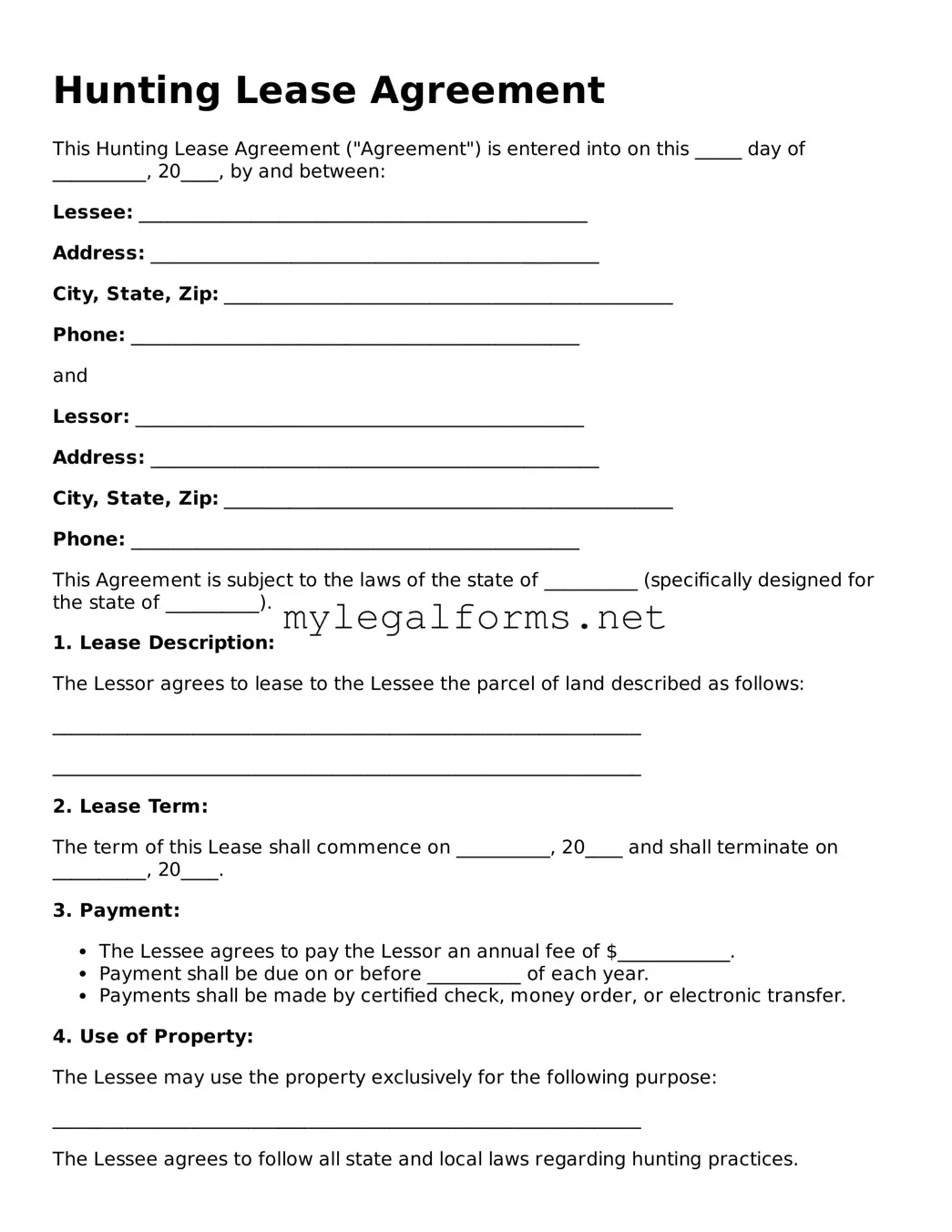Hunting Lease Agreement
This Hunting Lease Agreement ("Agreement") is entered into on this _____ day of __________, 20____, by and between:
Lessee: ________________________________________________
Address: ________________________________________________
City, State, Zip: ________________________________________________
Phone: ________________________________________________
and
Lessor: ________________________________________________
Address: ________________________________________________
City, State, Zip: ________________________________________________
Phone: ________________________________________________
This Agreement is subject to the laws of the state of __________ (specifically designed for the state of __________).
1. Lease Description:
The Lessor agrees to lease to the Lessee the parcel of land described as follows:
_______________________________________________________________
_______________________________________________________________
2. Lease Term:
The term of this Lease shall commence on __________, 20____ and shall terminate on __________, 20____.
3. Payment:
- The Lessee agrees to pay the Lessor an annual fee of $____________.
- Payment shall be due on or before __________ of each year.
- Payments shall be made by certified check, money order, or electronic transfer.
4. Use of Property:
The Lessee may use the property exclusively for the following purpose:
_______________________________________________________________
The Lessee agrees to follow all state and local laws regarding hunting practices.
5. Maintenance and Responsibilities:
- The Lessee is responsible for any damage caused to the property during the term of the lease.
- The Lessee must dispose of all trash and waste responsibly.
- The Lessor may enter the property at reasonable times for inspection or maintenance purposes.
6. Termination:
Either party may terminate this Agreement with a written notice of _____ days prior to termination.
7. Indemnification:
The Lessee agrees to indemnify and hold harmless the Lessor from any liabilities arising from this Agreement.
8. Governing Law:
This Agreement shall be governed by and construed under the laws of the state of __________.
IN WITNESS WHEREOF, the parties hereto have executed this Hunting Lease Agreement as of the date first above written.
_______________________________________
Lessee Signature
_______________________________________
Lessor Signature
